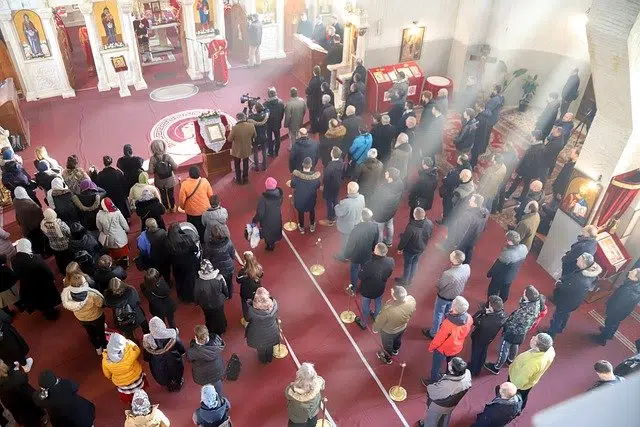
The way in which worship ceremonies are developed in a religion is called liturgy.
From the Latin liturgĭa , which in turn comes from a Greek word meaning "public service" , the liturgy is the order and form in which worship ceremonies are carried out in a religion . The term can also be used to refer to the ritual of ceremonies or solemn acts that are not religious.
For example: "The priest began the liturgy with the reading of a passage from the Holy Gospels" , "The liturgy will begin at 10 am and then the bishop will remain talking with the parishioners" , "The Peronist liturgy was felt in the president's act with hype and flags .
What is the liturgy
The liturgy, in other words, is a set of rites or rituals . Baptism, marriage, birthday celebrations and burials are part of a liturgy that obeys certain explicit or tacit rules. At a birthday party, cake is served at the end of the event and the honoree blows out one or more candles.
In the case of religions, the liturgy is more strict and is celebrated according to certain rules that are included in the liturgical books. The liturgical book that contains the ceremonies, readings and prayers for the celebration of the Holy Mass according to the Roman rite is known as Missale Romanum or missal . It is the official liturgical book of the Catholic Church , composed of three parts: the ordinary mass, the saints and the masses for the dead.
Although missals have existed since the Early Middle Ages , the definitive codification of the Roman liturgy came in 1570 at the initiative of the Council of Trent .

The Catholic liturgy has different sources.
The case of Catholicism
The Catholic liturgy can have a public, internal, external or hierarchical character. Regarding its classification, it depends on several criteria: according to its minister, it can be pontifical or priestly, if celebrated by the pope or a priest, respectively; Depending on its purpose, it can be latréutic (from the term latría , which can be understood as worship , reverence or adoration of God) or sacramental; Depending on its object, it can be psalmodic or sacramental.
Another way to classify the Catholic liturgy is by focusing on its origin and the place in which it is celebrated. In this case, two possibilities open up: the eastern ones, where the Armenians, the Greco-Slavs, the Coptic rite (originally from Egypt) and the Antiochians are found; the western ones (also known as Latin ), which are divided into the Roman and the Gallican. Until the beginning of the third millennium , between both groups they numbered around twenty-three.
Sources of the Catholic liturgy
With respect to the sources that constitute it, we can mention the following:
* Jesus Christ : is the son of God, who was born on Earth and lived among us until he was brutally murdered at the age of thirty-three. He is also called Jesus or Christ. The latter is a translation of messiah , a Greek term that refers to his unique and special nature, to having been chosen by God to represent him;
* the pope : also known as the Roman pontiff or the bishop of Rome. He is the most important figure of the Church as an institution, and is recognized in all parts of the world beyond the religious sphere. He is considered its visible head, its ambassador, since it has the mission of connecting the Church with all areas outside it. Of course he is also the sovereign of the Vatican ;
* liturgical books : they are those in which we can find the ceremonies that the Catholic Church determines to administer the sacraments, celebrate the mass and carry out the rest of the sacred functions. In principle, Christian communities did not have these books , although they emerged little by little throughout the first centuries.
